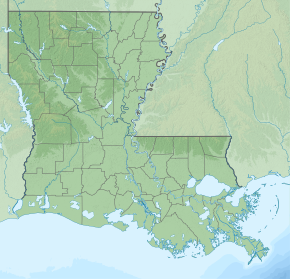| Battle of Pleasant Hill | |||||
|---|---|---|---|---|---|
| Part of the American Civil War | |||||
 Battle of Pleasant Hill by C. E. H. Bonwell — as illustrated in Frank Leslie's Weekly, May 14, 1864 | |||||
| |||||
| Belligerents | |||||
|
|
| ||||
| Commanders and leaders | |||||
|
|
| ||||
| Units involved | |||||
| Army of the Gulf | Trans-Mississippi Department | ||||
| Strength | |||||
| 12,000[1] | 12,100[1] | ||||
| Casualties and losses | |||||
|
1,369 total 150 killed 844 wounded 375 missing[2] |
~1,626 total ~1,200 killed and wounded 426 captured[2] | ||||
Location in Louisiana | |||||
The Battle of Pleasant Hill on April 9, 1864, in Louisiana formed part of the Red River Campaign during the American Civil War, when Union forces were attempting to occupy the Louisiana state capital, Shreveport.
The battle was essentially a continuation of the Battle of Mansfield, a Confederate victory, which had caused the Union commander, Major General Nathaniel P. Banks, to send his wagons, with most of his artillery, downriver in retreat. However, both sides had been reinforced through the night, and when the Confederate commander, Major General Richard Taylor launched an assault against the Union line, it was repulsed though at a high cost in casualties; the Union army retreated the next day. The majority of historians consider the battle to be a Union tactical victory, although some consider it to be a draw.[3][4][5]
- ^ a b Kennedy, p. 269.
- ^ a b Kennedy, p. 271.
- ^ Johnson 1958, p. 165.
- ^ Kennedy 1998, pp. 270–271.
- ^ Kennedy 1998, p. 271.
